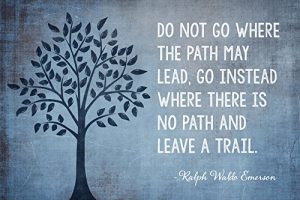**I’m late to the writing party, but I’ll be adding more than one post this week.**
On the way to class today, I heard an eager, “Hi Ms. Dewey! Ms. Dewey! Hi!” One of my former students sought me out. Immediately, I recognized him with the nagging realization that oh boy, time flies, as it has been at least six years since he enrolled in my ENG091 class, then subsequently for ENG101. He is a veteran, and when he came to GCC initially, he struggled with navigating how the skills he learned and used as an innate leader in the military could integrate into his daily life as a civilian and student. I remember the chilling first lines of his narrative: “If death was a person, I would have shook his hand on October 1, 2009. During a combat patrol in Afghanistan, I was with my platoon of twenty men.” This morning, he wanted to let me know that though he had taken a few years off, he is back and here now to finish his degree. Little did he know that in the earlier part of this week I was finding inspiration in Seattle at the Innovations Conference with the League for Innovation in the Community College, so I couldn’t help but respond with, “Awesome! I think that’s what community colleges do. Our students come, they may have to leave to take care of things, but we are always here to educate them when they come back.”
It is nothing short of appropriate that I ran into him today, when I did, as yesterday, I flew home to Phoenix guiltily mulling over what I was going to write for my blog posts I’ve clearly been postponing. At the conference, the theme of innovation, of course, was ever-present in a majority of the sessions, along with the encouragement that though we are in precarious times in higher education, the importance of the community college remains steadfast. Roy Spence of The Purpose Institute and The Promiseland Project kickstarted the innovative insight with a quote from Emerson, “Do not go where the path may lead, go where there is no path and leave a trail.” This is something, he asserts, we should be conveying to our students as we help them to find what they love to do. After a video of a Norwegian quartet crooning with a beautifully haunting rendition of Leonard Cohen’s “Hallelujah,” he reveals this is what purpose in our work sounds like because: “Everyone needs to know the words to the song, listen to each other, stand up for when it’s your turn, and it sounds pretty awesome when we sing it together” (Spence, 2020). As community college faculty and leaders, we have a great song to sing.

Martha Kanter continued the message with news on College Promise juxtaposing some of the nation’s challenges like “99% of new jobs are awarded to workers with some college; the cost of college has increased times twelve over the past thirty years; students have accumulated 1.6 trillion in debt; fourteen percent of community college students are homeless” (Kanter, 2020). In Kanter’s keynote, we also heard from a young woman who spoke about her past as a homeless trafficking victim with an eighth grade education who could not speak at the age of 27. Ten years ago, she found an escape in attending community college and is now in a Ph.D. program and leads a non-profit in downtown Seattle. She gave immense gratitude to her community college instructors for changing her life’s trajectory, essentially for saving her life.
We live in challenging, uncertain times, especially in the community college when students have more options for higher education than ever before and are simultaneously facing increasing basic needs insecurity. Indubitably, the Innovations Conference was introspectively motivational regarding my current role and pedagogy. It seems we must remain optimistic, innovative, and continue to believe that, “In doing our work, our community colleges are building the real American Dream for our country” (Kanter, 2020). We will always remain relevant for our students and our communities.

 Sleepless in Seattle!
Sleepless in Seattle!